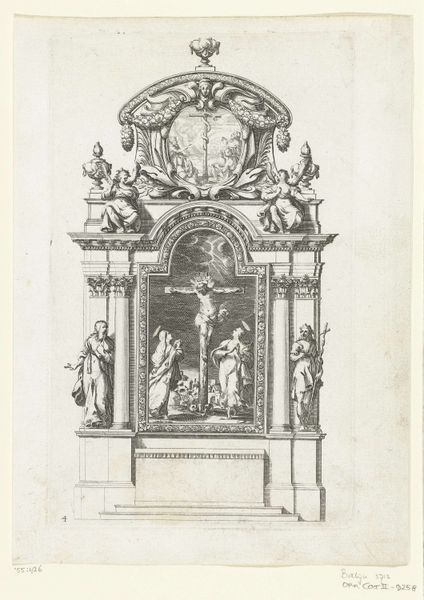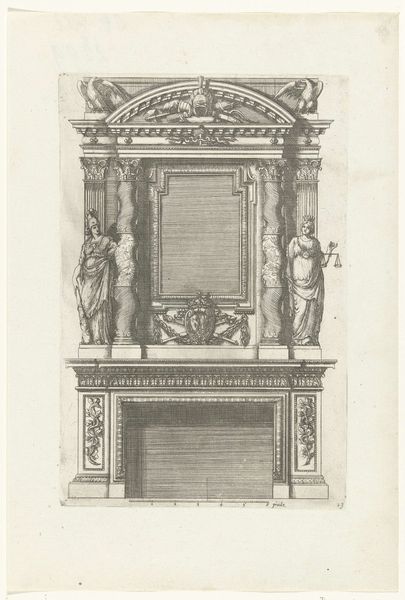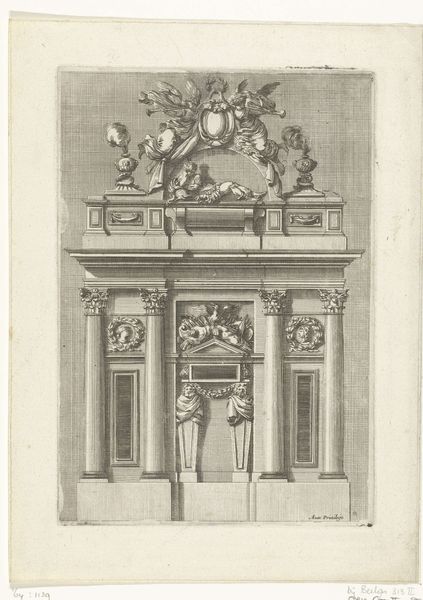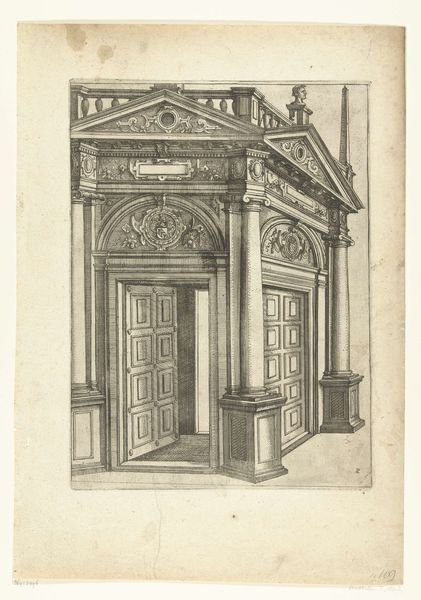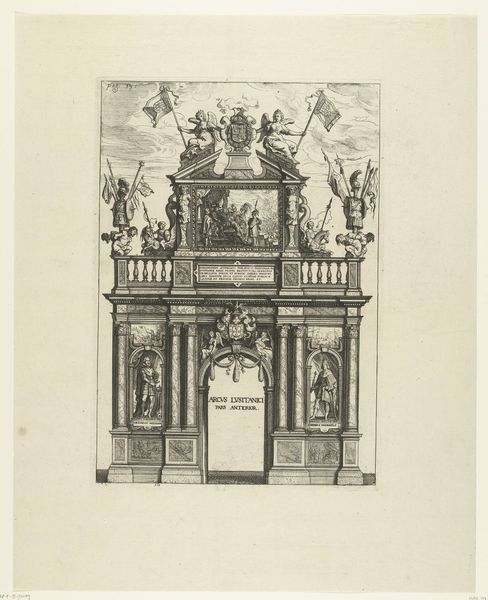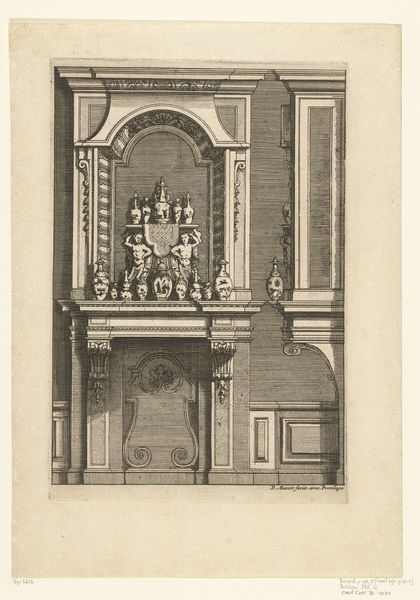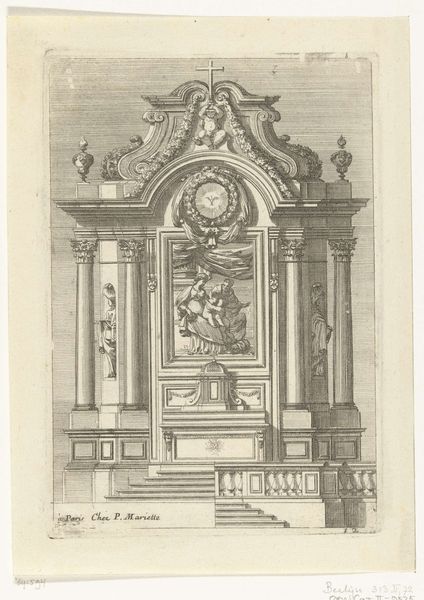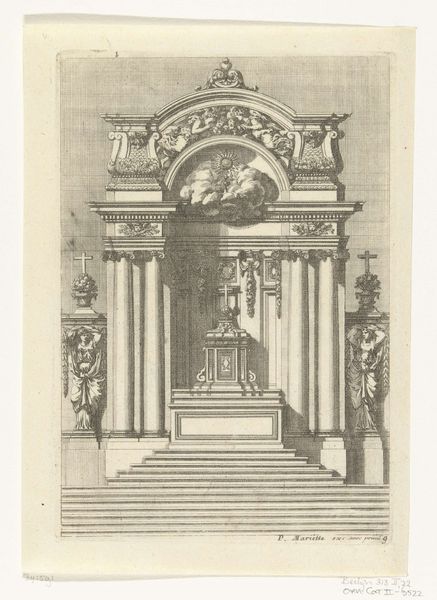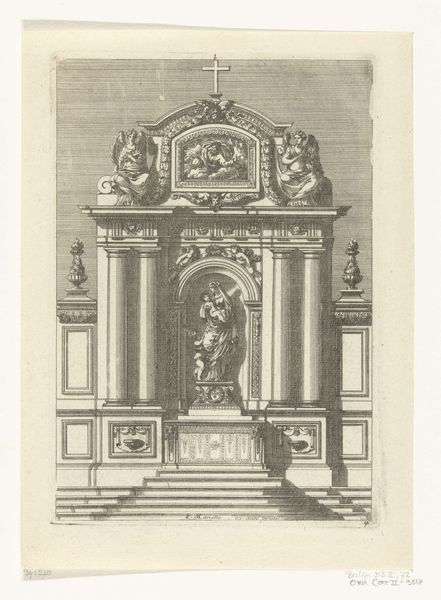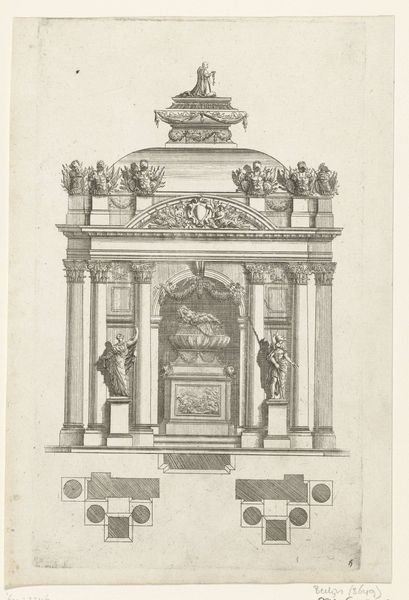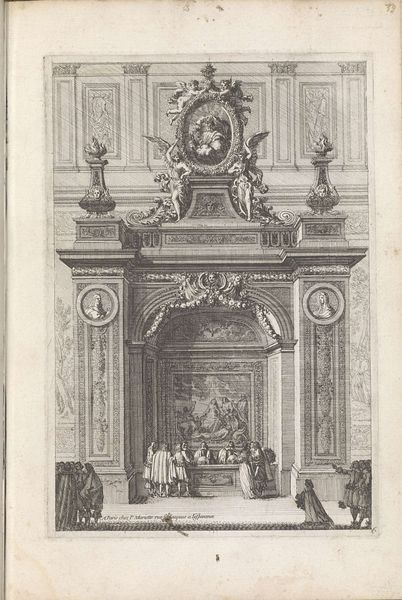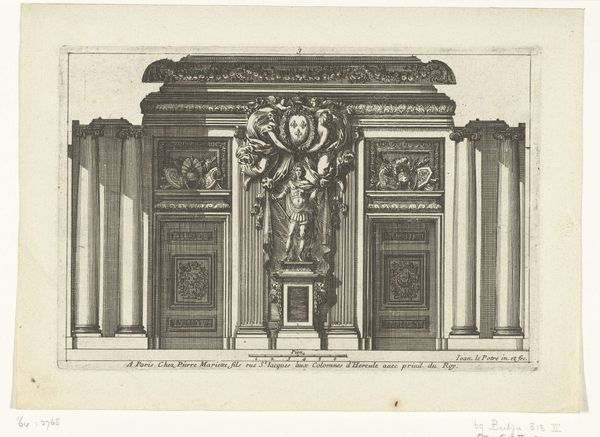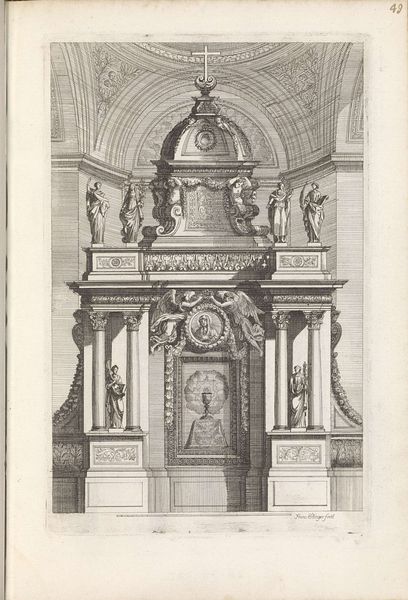
drawing, print, engraving, architecture
#
drawing
#
baroque
# print
#
form
#
line
#
engraving
#
architecture
Dimensions: height 193 mm, width 142 mm
Copyright: Rijks Museum: Open Domain
Editor: This is "Kapel," a drawing by Abraham Bosse from before 1643, housed in the Rijksmuseum. The intricate engraving gives it a sense of depth and formality. What symbolic elements stand out to you? Curator: This "Kapel," or chapel, is rich with cultural memory. Notice the symmetry; it's not merely aesthetic. Symmetry in religious art often signals a divine order, reflecting humanity's aspirations toward the heavens. Look at the figures flanking the central scene, could these allude to something broader? Editor: They look like they might be angels guarding the main religious figures? Curator: Precisely. Angels, architectural details such as columns and arches—all work together to create an aura of sacred space. Even the coat of arms above might represent the patron, grounding this idealized space in a very real, historical context. How does it feel to *you*, knowing all this? Editor: Knowing it's meant to represent a sacred space definitely shifts my perception. It’s like reading a complex visual language that requires a different kind of sight than just observing. Curator: Yes, the architectural style reflects a certain power, order and permanence—core aspirations within religious structures. Each element adds layers of meaning, building to a shared cultural understanding and visual legacy. Editor: That's a perspective I hadn't fully considered. The architectural components becoming carriers of religious intent and shared cultural meaning through symbolism... Curator: Absolutely, and perhaps, remembering the human stories of faith and creativity. These artistic voices speak across the centuries, connecting with our collective history.
Comments
No comments
Be the first to comment and join the conversation on the ultimate creative platform.
